Business
Vision Saha, Wellcome to Saha-gu Office
Business
Allure & Advantage
WELCOME TO THE ALLURE & ADANTAGE OF SAHA DISTRICT
Located in the southwestern part of Busan, South Korea, Saha District is a place where history and culture come alive. With its rich heritage and diverse cultural landscapes, Saha District offers an enriching blend of educational experiences and engaging community initiatives.
In the ever-evolving panorama of technology and industry, the Saha District of Busan sets its sights on a future that transcends the conventional - transitioning into a pivotal hub for the Fourth Industrial Revolution. All the while, it maintains its steadfast commitment to elevating the living standards of its diverse population, including local and international residents.
Two key strategic initiatives underpin this ambition. The first, the Saha Development Plan 2030, is a visionary roadmap for transforming the Saha district into an engine of exponential growth. It seeks to fortify the district's capabilities in advanced technologies and create a thriving ecosystem for businesses and residents alike.
The second plan, the Saha Development Concept in Connection with the New Gadeokdo Airport, focuses on harnessing the power of aviation to broaden Saha's horizons. By establishing stronger connections with the new airport, Saha can enhance its connectivity, accessibility, and appeal, thereby attracting more international visitors and investments. Together, these plans aim to improve the quality of life for all residents while positioning Saha as a key node in the global industrial and aviation network.

Saha District, or Saha-gu in Korean, has a rich history dating from the New Stone Age through the Samhan and Gaya periods. Archaeological sites,
such as the Neolithic Dadaepo Shell Mound and the Bronze Age Goejeong 1-dong and Goejeong 2-dong Sites, reflect this. Unfortunately,
the Dolmen in Gamcheon-dong no longer exists due to urban development and the expansion of Busan Thermal Power Plant in 1964.
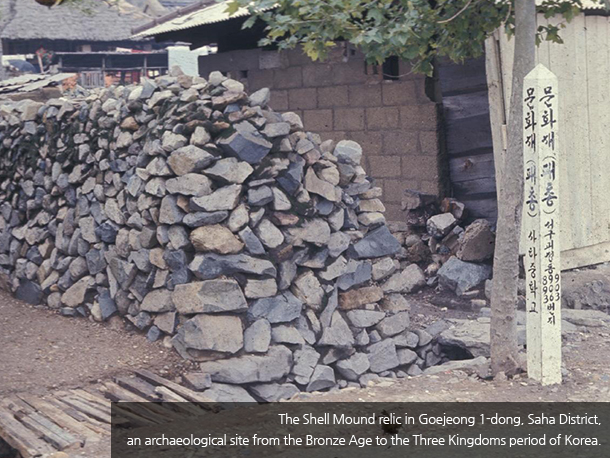
The records of Dongnae-bu from 1740 mention this area, Sacheon-myeon, as consisting of nine villages, such as Sinchorang-ri, Guchorang-ri,
Daeji-ri, Mokjang-ri, Gamcheon-ri, Dokji-ri, Jangnim-ri, and Dadae-ri. The area was strategically important for defense against Japan,
with fortifications like the Dadaejin Fortress.
In 1866, Sacheon-myeon split into Sasang-myeon and Saha-myeon. The 1904 "Register of Households in Dongnae-gun, Gyeongsangnam-do"
lists various villages in Saha-myeon, including Dadae-ri, Jangnim-ri, Seopyeong-ri, Sinpyeong-ri, Hadan-ri, Pyeongrim-ri, Gamcheon-ri, Daeti-ri,
Goejeong-ri, and Dangri. These now form part of the modern Saha District. In 1910, it became Saha-myeon of Busan-bu, and after
an administrative reorganization in 1914, neighborhoods such as Amnam-dong, Gamcheon-dong, Hadan-dong, Sinpyeong-dong,
Jangnim-dong, Dadae-dong, Gupyung-dong, Dangri-dong, and Goejeong-dong came under Saha-myeon in Dongrae-gun. Amnam-ri joined
Busan-bu in 1936 and was separated.
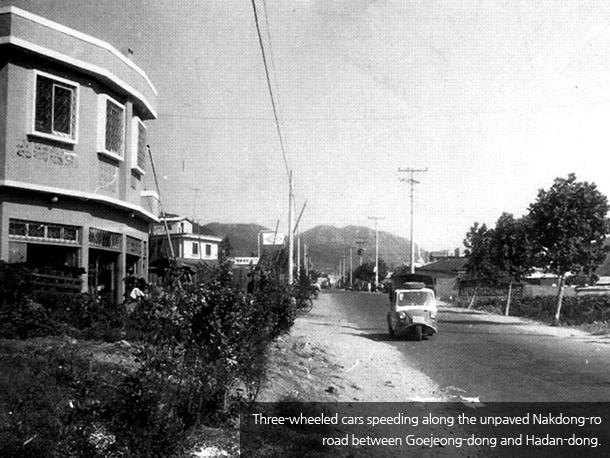
In 1942, the area joined Busan-bu, and a Saha office was established. This office was renamed the Saha office of Busan Western Office in 1951 and became the Saha branch of Seo-gu in 1957. Busan's elevation to a directly controlled city in 1963 led to the office being upgraded in 1975. In 1983, Saha-gu separated from Seo-gu and incorporated Eulsukdo Island and Ilwoongdo Island, previously under Buk-gu. With Busan's elevation to a Metropolitan City in 1995, the area officially became Saha-gu, Busan Metropolitan City.
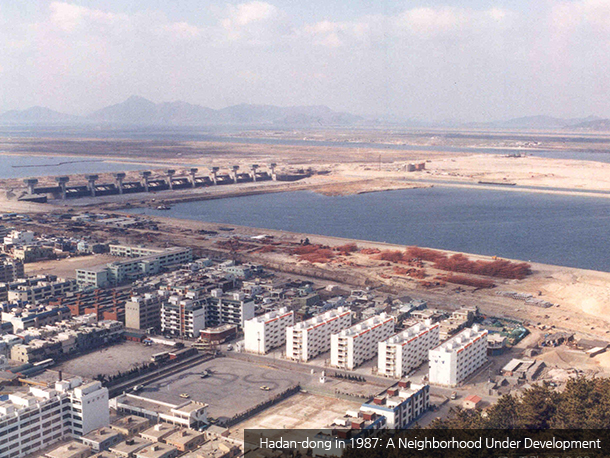
This historical journey has shaped the identity of the Saha District and significantly contributed to its rich cultural heritage.
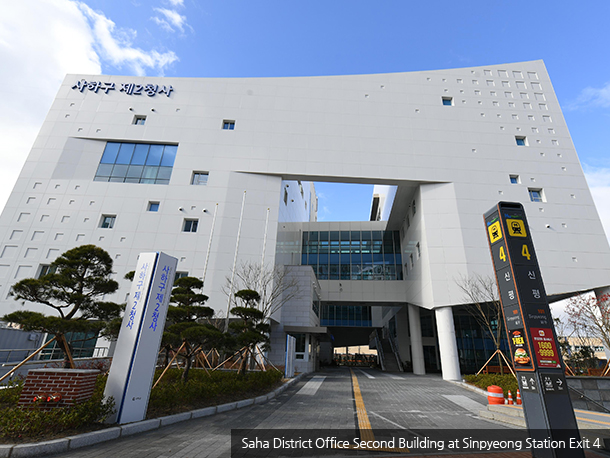
Cultural and Natural Vibrancy of Saha District
Saha District is renowned for its vibrant cultural scene. One of its standout attractions is Molundae. Molundae has been celebrated throughout history for its verdant forests, peculiar rock formations, undulating waves, and beautiful sandy patches. Moreover, its scenic charm is enhanced by the various shaped, small uninhabited islands scattered around it. At the southernmost tip of Molundae, there's a striking sea cave formed by wave erosion. Just behind this area lies the exquisite sandy beach of Dadaepo, a favorite spot for both locals and tourists.
 Tranquil Beauty: Sunset at Dadaepo Beach
Tranquil Beauty: Sunset at Dadaepo Beach
The district is not only rich in natural beauty but also steeped in cultural depth. It houses the Nakdonggang River Estuary Eco-Center, an ecological preservation site that serves as a sanctuary for migratory birds and educates visitors on the importance of biodiversity. Nestled in this scenic landscape is Eulsukdo Island, which was once a natural island in the Nakdonggang River. Now, it's a paradise for birdwatchers and nature enthusiasts, housing the Eulsukdo Cultural Center which celebrates local traditions, and the Eulsukdo Migratory Bird Park, which offers encounters with diverse bird species. Complementing the district's ecological grandeur is the cultural richness embodied by the Museum of Contemporary Art, Busan. This museum serves as a critical hub for modern art, hosting a wide variety of exhibitions that showcase both Korean and international artists, thereby offering a unique window into the vibrant cultural scene in Busan. Thus, the district exemplifies the perfect blend of natural beauty and cultural vibrancy, offering experiences that cater to a myriad of interests.
 Tranquil Beauty: Sunset at Dadaepo Beach
Tranquil Beauty: Sunset at Dadaepo Beach
Adding further depth and color to the district's cultural landscape is the extraordinary Gamcheon Culture Village. This captivating neighborhood, fondly referred to as the 'Machu Picchu of Busan,' is a mosaic of history, culture, and art. Each narrow, winding alley and steep stairway is part of a mesmerizing labyrinth, leading to a delightful surprise at every turn. The homes here, stacked together like a deck of colorful cards against the hillside, are each painted in a vibrant palette, showcasing artistic creativity and community spirit. This area is more than just a residential quarter; it's a living, breathing canvas that captures and expresses the spirit of Busan in the most charming way. The village serves as an open-air museum, offering visitors a unique journey through the district's distinct art and culture. Amidst the vibrant hues and rustic charm, one discovers art installations, murals, and galleries tucked away in unexpected corners, each telling a unique story of the city's rich cultural heritage. The Gamcheon Culture Village, thus, not only enriches the district's cultural vibrancy but also serves as a testament to the district's creative soul and resilience.
 Cheon Deok Su's Well: A Hidden Gem in Gamcheon Culture Village
Cheon Deok Su's Well: A Hidden Gem in Gamcheon Culture Village
Lastly, Seunghaksan Mountain stands as a symbol of Saha District's spirit. Offering panoramic views of the Nakdonggang River, Eulsukdo Island, and the district's landscape, it remains a popular destination for hiking and leisurely strolls among locals. Whether for its natural beauty, cultural richness, or historical significance, Saha District truly offers a diverse array of experiences.
 The silver grass field of Seunghaksan Mountain
The silver grass field of Seunghaksan Mountain
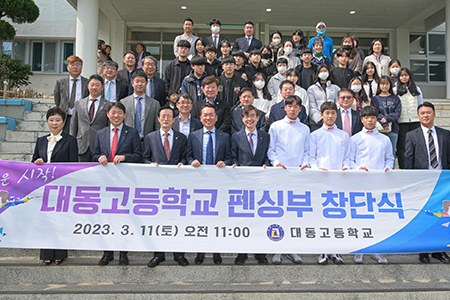 Dadae Marine City
Dadae Marine City
The specialized high schools further enhance the district's educational landscape with their unique curriculums and focused areas of study. These include the likes of foreign language high schools and science high schools. In fact, Saha District is home to six specialized high schools, an unprecedented number even when compared to districts in Seoul. This wide selection of educational institutions not only caters to students within Saha District but also draws a significant number of students from other districts who commute to Saha for its high-quality education. The district truly leaves no stone unturned when it comes to offering a diverse and comprehensive range of educational opportunities.
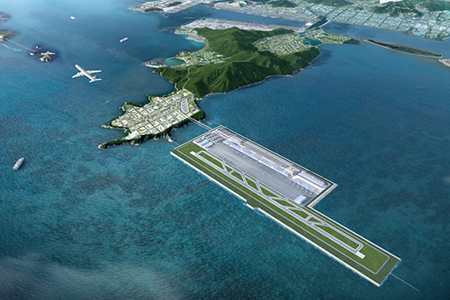 The Construction of Gadeokdo New Airport
The Construction of Gadeokdo New Airport
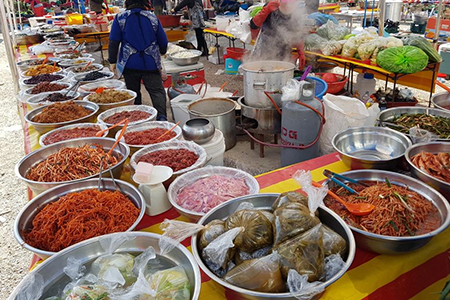 The Hadan Fifth-Day Market operates six times a month,
The Hadan Fifth-Day Market operates six times a month,specifically on dates ending with "2" and "7"
: the 2nd, 7th, 12th, 17th, 22nd, and 27th.
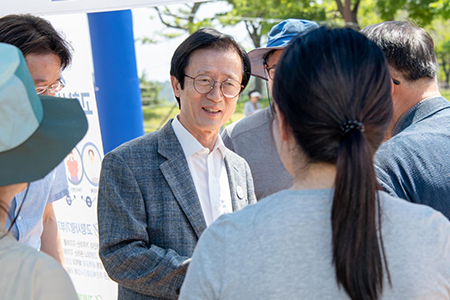 Flea Market at Dadaepo
Flea Market at Dadaepo
The district also hosts a plethora of community centers and public spaces that serve as vital hubs for local gatherings, informal interactions, and educational activities, promoting the sharing and learning of Saha's rich cultural heritage. Ultimately, Saha District exemplifies a tight-knit community, not merely a place of residence, characterized by shared values, mutual respect, and a strong sense of belonging, a testament to its resilient character and commitment to fostering an inclusive and welcoming environment for all.
diverse culture, educational excellence, vibrant community spirit, and
culinary delights. Join us as we delve into the captivating charm of this
remarkable district in Busan.
 Cheon Deok Su's Well: A Hidden Gem in Gamcheon Culture Village
Cheon Deok Su's Well: A Hidden Gem in Gamcheon Culture Village



